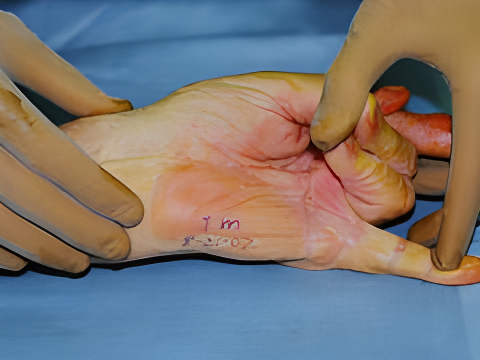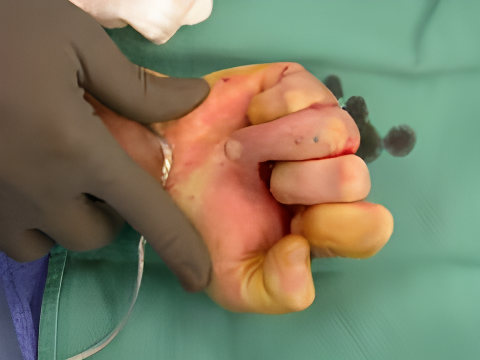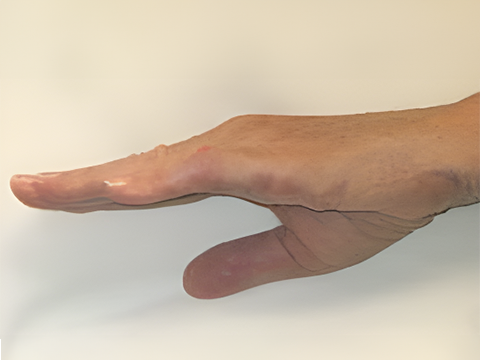Reverse Finger Deformity Caused by PIP Joint Contracture with Digit Widget
Say goodbye to finger deformity in the PIP joint and restore a full range of motion with Digit Widget’s minimally invasive, pain-free treatment.

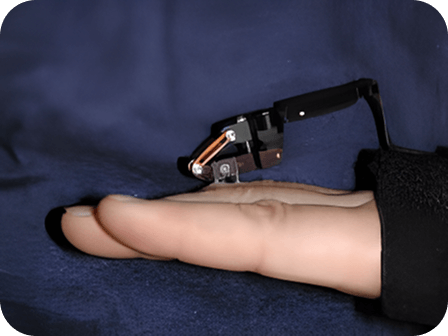
Why is early treatment for finger deformity in the PIP joint crucial?
Finger deformity in the PIP joint can be a warning sign for something more severe and permanent. Left untreated, this can progress to finger contractures leading to lasting stiffness, fixed deformity, hygiene problems, and more. The longer the tissue stays contracted, the harder it is to restore motion, making recovery slower and more complex.
Patient Testimonials
Reclaim your range of motion and independence to move.
How does finger deformity impact daily life and long-term mobility?
- Prevent full extension in the affected finger
- Reduce grip strength, making objects harder to hold
- Hinder daily tasks like dressing, writing, or using tools
- May cause skin folds, and hygiene issues
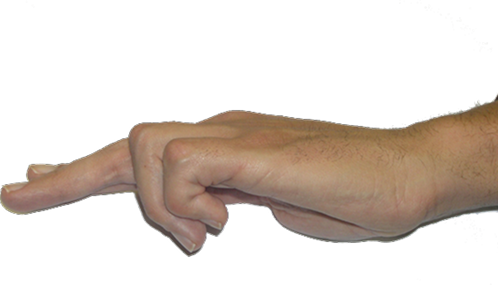
Why conventional treatments may not deliver lasting results for finger deformity?

Splinting and therapy:
May help in mild cases, but are often ineffective for established contractures, where splints may cause blisters, PIP joint pain, and ischemia

Enzyme injections
Effective for some patients
but carry risks of skin tears,
tendon rupture, and variable
outcomes

Complex surgery
Can restore motion but
involves long recovery ,
scarring , and surgical
risks
Digit Widget: A minimally invasive path to relieving Finger deformity in PIP joint
- Applies gentle skeletal torque to gradually straighten fingers
- Lengthens soft tissues without damaging the skin or causing pain
- Maintains finger flexion, allowing patients to stay active during treatment
- Fast outpatient treatment, typically completed in under 20 minutes
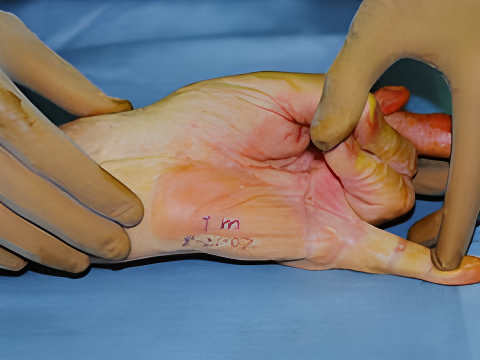
How Digit Widget transforms PIP joint contracture treatment
Minimally invasive, pain-free relief
- 5-10 degrees of PIP joint extension gained per week
- Avoids the risks associated with injections
- May be ideal for patients with medical complications
Designed for 24/7 comfort
- No pressure points, no blisters, no loss of circulation
- Comfortable and flexible, encouraging high compliance
- Lightweight for continuous wear
Activity encouraged, not restricted
- Preserves flexion and functional use of the hand
- Reduces stiffness and enhances range of motion
- Supports everyday tasks and light activity during treatment
Effective and ready to use
- Single-use, sterile system with everything needed for ease of use
- Proven results from more than 19,000 cases
Digit Widget Case Studies
Reverse the PIP joint contracture and restore the range of motion.
FAQs
What is a PIP joint finger contracture, and why does it happen?
A PIP joint finger contracture occurs when the soft tissues around the PIP joint shorten and tighten, preventing the finger from fully straightening. This can result from Dupuytren’s disease, trauma, or prolonged immobilization. Over time, it may lead to PIP joint pain, difficulty with daily tasks, and in severe cases, permanent deformity
Why choose Digit Widget over traditional treatments like splints, injections, or open finger surgery?
Digit Widget stands out as a treatment for PIP joint contractures for various reasons. Compared to the standardized treatment options, Digit Widget stands out in the following ways:
Digit Widget is a minimally invasive, outpatient procedure that does not include any of the complexities of open surgeries. In cases that require additional surgery, Digit Widget may be used as a pre-op splint to improve palmar access or as a post-op splint to reduce scar tissue contractures.
Unlike splints that are only effective in mild cases, Digit Widget works even for severe PIP joint contractures.
On the other hand, injections may reduce the contracture but often fail to correct the soft tissue deformity. Digit Widget, while being a pain-free procedure, restores motion comfortably and helps to avoid surgical complications.
How long does Digit Widget take to improve motion in a contracted PIP joint?
The speed of recovery largely depends on the severity of the condition and the complication of the case. However, most patients experience 5–10 degrees of extension improvement per week. Since it can be worn 24/7 without skin pressure, blisters, or circulation loss, recovery is steady and comfortable.


